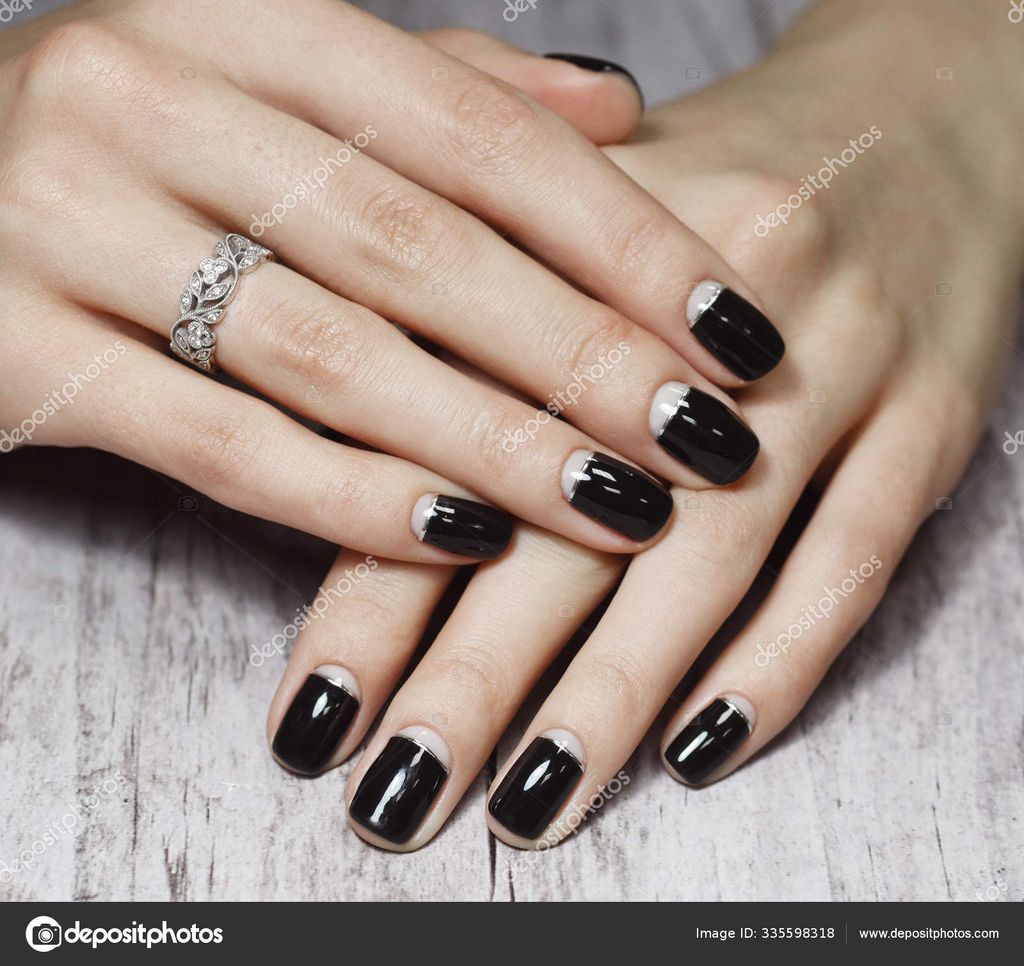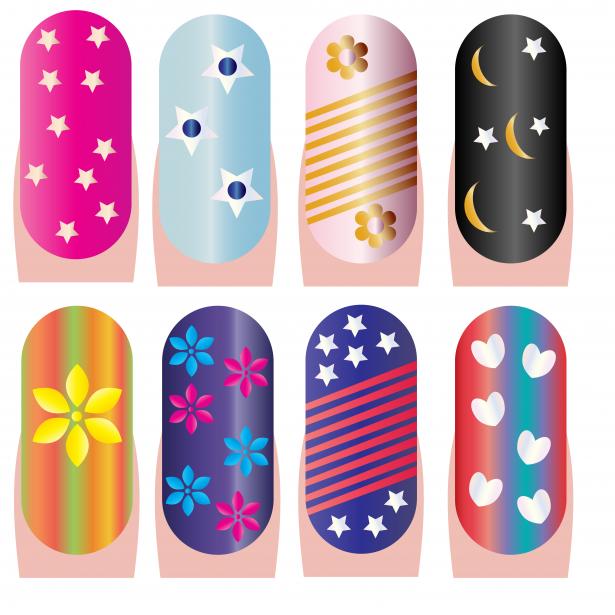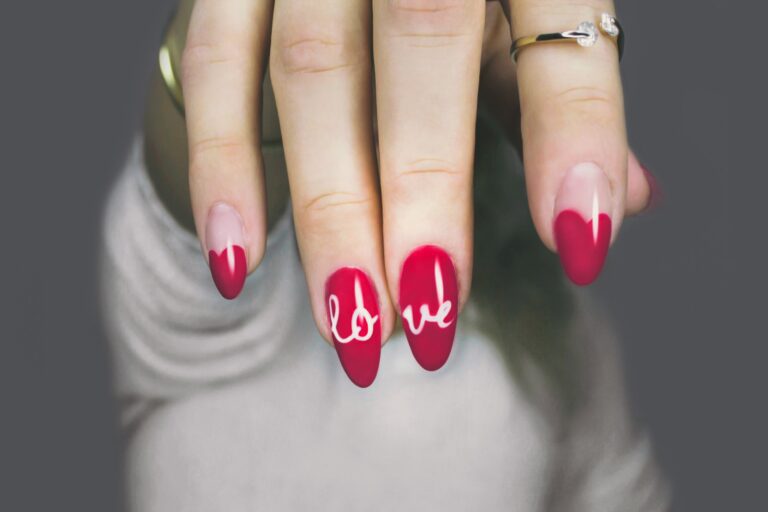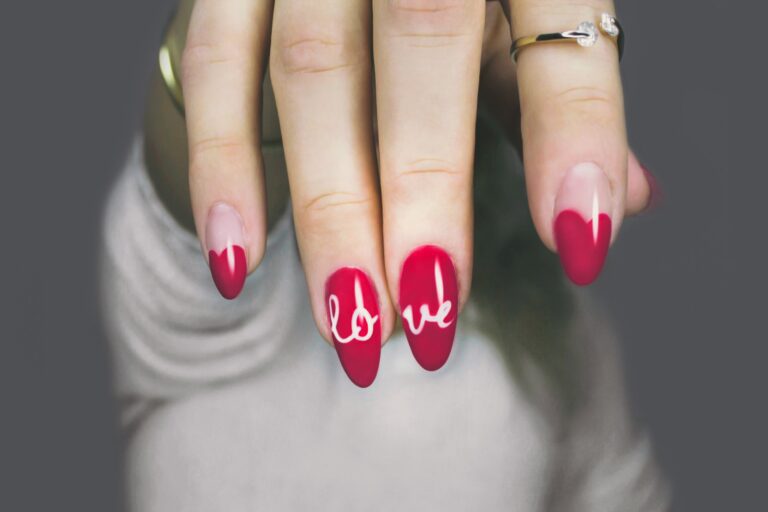“Nail Artistry: Exploring How Nails Are Done”
Deprecated: mb_convert_encoding(): Handling HTML entities via mbstring is deprecated; use htmlspecialchars, htmlentities, or mb_encode_numericentity/mb_decode_numericentity instead in /home/u654140373/domains/nailinspire.com/public_html/wp-content/plugins/kadence-pro/dist/elements/elements-init.php on line 1267
Deprecated: Function utf8_decode() is deprecated in /home/u654140373/domains/nailinspire.com/public_html/wp-content/plugins/kadence-pro/dist/elements/elements-init.php on line 1275
Nail artistry is a fascinating and evolving form of self-expression that has a rich history and a wide array of techniques. From ancient practices to modern trends, nail art has seen influential eras and technological advancements that have shaped its current state. In this article, we will explore the evolution of nail artistry, the fundamentals of nail anatomy and care, the creative process of nail design, professional tools and materials, a step-by-step guide to nail artistry, health and safety standards in nail salons, and the business of nail artistry.
Key Takeaways
- Understanding the historical evolution of nail artistry provides valuable insights into its cultural significance and contemporary relevance.
- Nail anatomy and care are fundamental to maintaining healthy and beautiful nails, and understanding common conditions and treatments is essential for nail technicians.
- The creative process of nail design involves conceptualizing unique art, applying color theory, and mastering intricate techniques to create stunning nail art.
- Professional nail technicians require specific tools, materials, and knowledge of nail enhancements to deliver high-quality services and designs.
- Health and safety standards in nail salons are crucial for protecting both clients and technicians, encompassing sanitation protocols, chemical hazard awareness, and ergonomic considerations.
The Evolution of Nail Artistry

Ancient Practices to Modern Trends
The journey of nail artistry is a vivid tapestry that stretches back to ancient civilizations. From the use of kohl to adorn nails in Ancient Egypt to the intricate henna designs in India, each culture has contributed uniquely to the evolution of nail aesthetics. As we transitioned into the modern era, nail art became a form of self-expression and a reflection of societal trends.
During the 20th century, the nail industry saw a surge in creativity and innovation. The introduction of automotive paint technology in the 1920s led to the creation of glossy, long-lasting nail polishes. The subsequent decades brought about a variety of styles, from the bold reds of the 1950s to the psychedelic patterns of the 1970s. Today, nail art continues to evolve with the latest fashion trends, often serving as a canvas for artistic expression.
Current trends in nail art are as diverse as they are dynamic. For instance, the year 2024 has seen a rise in minimalist chic and earthy green shades, indicating a shift towards quiet luxury and abstract designs. The emphasis on short nails and natural colors suggests a growing appreciation for subtlety and understatement in nail fashion.
Tip: To stay current with nail art trends, pay attention to the fashion industry’s seasonal shifts and emerging cultural influences. This awareness can inspire fresh and relevant designs.
Influential Eras in Nail Fashion
The tapestry of nail fashion is rich with history, each era leaving its indelible mark on the styles and preferences of the time. From the ancient dynasties where nail color signified social status, to the roaring 1920s when glossy reds and deep plums became symbols of glamour and femininity, the evolution of nail artistry reflects broader societal trends.
During the 20th century, nail fashion saw dramatic shifts. The post-war 1950s celebrated pastel shades and the advent of the French manicure, while the 1980s and 1990s brought about bold, neon colors and the rise of nail art as a form of self-expression. The turn of the millennium welcomed the fusion of classic and contemporary, with nail art becoming a personalized accessory.
Today, the digital age has further revolutionized nail fashion, with platforms showcasing a plethora of designs that cater to every imaginable taste and occasion. The list below highlights some of the most popular styles that have emerged:
- Minimalist and geometric designs
- Themed art for holidays and events
- Sustainable and vegan polish options
- Hybrid gels and long-lasting finishes
Tip: To stay current in the ever-changing landscape of nail fashion, continuously seek inspiration and embrace new techniques that resonate with your personal style or that of your clientele.
Technological Advancements in Nail Art
Technological advancements have revolutionized the nail art industry, paving the way for innovative techniques and futuristic trends. From 3D printing of nail designs to the use of augmented reality for virtual nail try-ons, technology has opened up a world of possibilities for nail artists and enthusiasts. The integration of smart sensors in nail products has also enhanced the precision and accuracy of nail art applications, ensuring a seamless and efficient process. Additionally, the development of eco-friendly and sustainable nail art materials reflects the industry’s commitment to environmental responsibility and sustainability.
Fundamentals of Nail Anatomy and Care

Understanding Nail Structure
The structure of the nail is both fascinating and complex, serving not only as a protective covering but also as a tool for daily tasks. Nails are primarily composed of a hard, protective protein called keratin. This protein is also found in the skin and hair, making it a fundamental component of the body’s integumentary system.
Nails grow from the nail root, hidden under the cuticle, and are visible as the nail plate. The nail plate rests on the nail bed, which is rich in blood vessels and nerves, providing the pinkish color to the nails. The white crescent-shaped area at the base of the nail, known as the lunula, is a visible part of the matrix where nail growth occurs.
- Nail Root: The starting point of the nail, located beneath the cuticle.
- Nail Plate: The hard and translucent part of the nail, made of keratin.
- Nail Bed: The skin beneath the nail plate, nourishing the nail.
- Lunula: The half-moon shape at the base of the nail, indicating the growth zone.
- Cuticle: The tissue that overlaps the nail plate at the base, protecting new nail growth.
Tip: Regular moisturizing of the cuticle and nail bed is essential for maintaining nail health and promoting strong growth.
Essential Nail Care for Optimal Health
Maintaining the health of your nails is not just about aesthetics; it’s a vital part of your overall well-being. Proper nail care helps to prevent common issues such as brittleness, fungal infections, and ingrown nails. To ensure optimal nail health, it’s important to follow a consistent care routine that includes hydration, gentle grooming, and protection.
Hydration is key for strong, flexible nails. Regularly applying a moisturizing lotion or cuticle oil can keep your nails and surrounding skin from becoming dry and brittle. When grooming your nails, use the right tools, such as a glass file for shaping and a soft buffer for smoothing the nail surface. Always trim nails straight across to avoid ingrown nails, and keep them at a manageable length.
Protection of your nails is crucial, especially when performing tasks that can cause damage. Wearing gloves while cleaning and avoiding harsh chemicals can help preserve your nail’s integrity. Additionally, giving your nails a break from polish and treatments allows them to breathe and recover.
Tip: Always use a base coat before applying nail polish to prevent staining and to provide an extra layer of protection for your nails.
Common Nail Conditions and Treatments
Nail health is paramount for both aesthetics and overall well-being. Nail conditions can range from mild discoloration to severe infections that require medical attention. It’s essential to recognize the signs of common ailments and understand the treatments available.
For instance, fungal infections are prevalent and typically present as yellowing, thickening, or crumbling of the nail. Treatment may involve antifungal medications, either topical or oral, depending on the severity. Onycholysis, the separation of the nail from the nail bed, can be caused by injury, infection, or underlying health issues. Addressing the root cause is crucial for recovery.
Tip: Regular inspection of nails for any changes or abnormalities can lead to early detection and more effective treatment.
Maintaining nail health involves a balance of proper hygiene, nutrition, and avoiding harsh chemicals. Products that provide nourishment and strength, like those from Sally Hansen’s range, can be beneficial. In cases where self-care is insufficient, consulting a healthcare professional is advised.
The Creative Process of Nail Design

Conceptualizing Unique Nail Art
When it comes to conceptualizing unique nail art, it’s essential to draw inspiration from a variety of sources. Whether it’s nature, fashion trends, or personal experiences, the creative process is fueled by a diverse range of influences. Exploring different color palettes and textures can lead to innovative designs that capture the essence of individuality. Additionally, experimenting with unconventional materials and techniques opens up a world of possibilities for creating truly one-of-a-kind nail art.
- Implement a table for presenting structured, quantitative data. Ensure it’s succinct and formatted correctly in Markdown.
- Use a bulleted or numbered list for less structured content, like steps, qualitative points, or a series of related items.
Embrace the freedom to think outside the box and let your imagination run wild. This is where true artistry blossoms.
Color Theory in Nail Polish Selection
When it comes to selecting the perfect nail polish color, understanding the undertones of your skin is crucial. Warm undertones, cool undertones, and neutral skin tones each have a palette of colors that complement them best. Here’s a quick guide to help you match your skin tone with the right nail polish colors:
- Warm Undertones: Opt for shades like peach, coral, and gold to enhance the warmth of your skin.
- Cool Undertones: Choose colors like blue, purple, and silver to complement the coolness of your skin.
- Neutral Skin Tones: Enjoy the versatility of shades like nude, taupe, and mauve that complement neutral undertones.
Tip: Always consider your skin’s undertones when selecting nail polish colors to achieve a harmonious and flattering look.
Techniques for Intricate Designs
Mastering the art of intricate nail designs requires both creativity and precision. One popular method is nail stamping, a technique that allows for detailed patterns to be transferred onto the nail with remarkable accuracy. This process involves a stamping plate with engraved designs, a scraper to remove excess polish, and a silicone stamper to pick up and apply the design.
Freehand painting is another technique that showcases the nail artist’s skill. With a fine nail art brush and a steady hand, artists can create miniature masterpieces directly on the nail surface. This method is ideal for custom designs and requires a significant level of dexterity and patience.
Tip: Always allow each layer of polish to dry completely before applying the next to prevent smudging and to achieve a clean, crisp finish.
For those looking to add texture and dimension to their nail art, the use of embellishments such as rhinestones, beads, or foil can provide an extra flair. Adhering these tiny decorations requires a good eye and a precise application tool, often a dotting pen or tweezers.
Professional Tools and Materials

Must-Have Equipment for Nail Technicians
For nail technicians, having the right equipment is essential to delivering high-quality service and intricate designs. The foundation of a well-equipped nail station includes nail files, cuticle pushers, nail clippers, and nail brushes. These tools are indispensable for shaping nails and ensuring clean, precise work.
In addition to the basics, a modern nail technician’s arsenal should feature advanced tools such as UV or LED lamps. These are crucial for curing gel polish, a popular choice among clients for its durability and glossy finish. A variety of nail polishes, base and top coats are also fundamental to create a wide range of aesthetic options.
Tip: Invest in high-quality tools that offer precision and durability. They may come at a higher initial cost, but their longevity and performance can enhance your work and client satisfaction.
Finally, staying organized is key. A systematic arrangement of your tools and materials not only streamlines the workflow but also projects professionalism and attention to detail to your clients.
Exploring Different Types of Nail Polishes and Gels
When exploring different types of nail polishes and gels, it’s essential to consider the unique properties and application methods of each product. Gel manicures are renowned for their longevity, typically lasting up to two weeks (sometimes more!) without chipping, making them a popular choice for clients seeking durable nail enhancements. In contrast, regular nail polish offers a wide range of colors and finishes, providing versatility for various nail art designs. Here’s a brief comparison of the two types:
| Nail Polish Type | Longevity | Application Method |
|---|---|---|
| Gel Manicure | Up to two weeks | Requires UV/LED curing |
| Regular Nail Polish | 3-7 days | Air-dries naturally |
It’s important to educate clients about the differences between gel manicures and regular nail polish, helping them make informed decisions based on their preferences and lifestyle. Additionally, proper removal techniques and aftercare play a crucial role in maintaining the health and appearance of natural nails. Remember, understanding the nuances of nail polishes and gels empowers nail technicians to deliver exceptional results and client satisfaction.
The Role of Nail Enhancements and Embellishments
Nail enhancements and embellishments are not just accessories; they are essential elements that transform a simple manicure into a work of art. Nail enhancements such as acrylics, gels, and extensions provide a sturdy canvas for intricate designs and allow for greater creative expression. Embellishments like rhinestones, studs, and stickers add texture and dimension to nail art, making each design unique.
- Blooming gel*, a trend that has gained popularity in 2023, exemplifies the innovative use of enhancements to achieve a watercolor effect that pairs beautifully with other embellishments. The use of 3-D elements on top of the nail creates an eye-catching effect that can range from subtle to dramatic, depending on the client’s preference.
Tip: When applying embellishments, always seal them with a topcoat to ensure longevity and protect the design from wear and tear.
The table below showcases common types of nail embellishments and their typical uses:
| Embellishment Type | Description | Typical Use |
|---|---|---|
| Rhinestones | Sparkling stones | Adding bling |
| Studs | Metal or plastic pieces | Textured designs |
| Stickers | Pre-designed art | Quick applications |
| Glitter | Shiny particles | Sparkle effect |
Whether you’re a nail technician or a DIY enthusiast, understanding the role of enhancements and embellishments can empower your beauty journey, allowing you to create nail art that is not only beautiful but also a form of personal expression.
Step-by-Step Guide to Nail Artistry

Preparation and Base Coating
After the meticulous preparation of the nails, the next crucial step is the application of the base coat. The base coat serves as a protective barrier, ensuring the natural nails are shielded from potential damage caused by pigmented nail polish. It also promotes better adhesion and prevents staining, ultimately contributing to the longevity of the manicure. When applying the base coat, it’s essential to allow each layer to dry thoroughly to achieve optimal results. Here’s a simple guide to the application process:
| Step | Description |
|---|---|
| 1 | Clean and shape the nails |
| 2 | Gently push back cuticles |
| 3 | Apply a thin, even layer of base coat |
| 4 | Allow to dry completely |
| 5 | Proceed with nail polish application |
Remember, a well-executed base coat sets the foundation for a flawless and enduring nail art masterpiece.
Applying and Sealing Designs
Once the base coat has dried, it’s time to let creativity take the lead. Applying the nail design requires a steady hand and an eye for detail. Whether you’re using stencils, freehand painting, or nail stickers, precision is key. For intricate designs, thin brushes and dotting tools are indispensable for achieving those fine lines and patterns.
After the artwork is complete, sealing the design is crucial for durability. A high-quality top coat not only provides a glossy finish but also protects the nail art from chipping and wear. It’s advisable to apply two coats of top coat for maximum protection. Reapplying a fresh top coat every few days can extend the life of the nail art significantly.
Tip: Always allow each layer, whether polish or top coat, to dry thoroughly before applying the next. This prevents smudging and ensures a flawless finish.
Remember, the sealing process is not just about protection; it’s also about enhancing the overall look of the nail art. The right top coat can add depth to colors and make the design pop.
Finishing Touches for Longevity and Shine
After applying and sealing the nail designs, it’s essential to ensure that the final touches enhance the longevity and shine of the manicure. One way to achieve this is by using a high-quality top coat that provides a protective layer and a glossy finish. Additionally, gently massaging cuticle oil around the nail bed can promote nail health and add a subtle sheen to the overall look. Finally, a quick-drying spray can help set the designs and seal in the shine for a long-lasting and professional finish. Remember, attention to detail in the finishing touches can elevate the entire nail artistry experience.
Health and Safety Standards in Nail Salons

Sanitation and Disinfection Protocols
Maintaining a high standard of hygiene in nail salons is crucial for preventing infections and ensuring client safety. Sanitation involves the removal of dirt and debris, typically using soap and water, as a first step in the cleaning process. This is followed by disinfection, which requires the use of chemical solutions, such as Barbicide, to eliminate any remaining bacteria, fungi, and viruses.
Tip: Always follow the manufacturer’s instructions for dilution and contact time to ensure the efficacy of disinfectants.
Proper tool sterilization is another key aspect of salon hygiene. Techniques like autoclaving, which uses high-pressure steam, or chemical sterilization should be employed to sterilize reusable tools between clients. It’s essential to implement a routine that includes end-of-day cleaning procedures, such as draining and scrubbing foot spa basins and removing any visible debris.
Here is a simple checklist for daily sanitation and disinfection in nail salons:
- Clean all surfaces with soap and water.
- Disinfect surfaces and tools with an EPA-registered disinfectant.
- Sterilize reusable tools using approved methods.
- Perform nightly cleaning of foot spa basins and equipment.
By adhering to these protocols, nail technicians can provide a safe and hygienic environment for their clients, minimizing the risk of infection and ensuring a pleasant salon experience.
Navigating Chemical Hazards
In the bustling environment of a nail salon, technicians are frequently exposed to a variety of chemicals that can pose health risks if not handled properly. Acetone, formaldehyde, and toluene are common substances found in nail products that require careful management to ensure safety. It is crucial for nail technicians to be well-versed in the properties of these chemicals and the appropriate safety measures to take when using them.
To mitigate the risks associated with chemical exposure, salons should adhere to strict guidelines for ventilation, personal protective equipment (PPE), and storage. For instance:
- Ensure proper ventilation systems are in place to disperse fumes.
- Use PPE such as nitrile gloves and safety goggles to prevent direct contact with harmful substances.
- Store chemicals in clearly labeled, sealed containers away from heat sources.
Tip: Always follow the manufacturer’s instructions for use and disposal of nail products to minimize health hazards.
By implementing these safety protocols, nail salons can create a healthier environment for both employees and clients. It is also essential to stay informed about the latest safety regulations and product innovations that can further reduce chemical risks in the workplace.
Ergonomics for Nail Technicians
Ergonomics plays a pivotal role in the daily life of a nail technician. Ensuring that the work environment is tailored to the technician’s physical needs is essential for both comfort and long-term health. A well-designed ergonomic chair is a cornerstone of a nail technician’s workstation, providing the necessary support to prevent strain during long hours of detailed work.
Comfort and posture are critical factors to consider when selecting a chair. The ideal chair should offer adjustable height, lumbar support, and the ability to swivel and roll without restriction. It’s not just about the chair, though; the entire salon setup should promote a natural and efficient workflow.
Remember: Investing in ergonomic furniture and tools is not an expense, but a long-term investment in your health and productivity.
Here are some key ergonomic considerations for nail technicians:
- Adjustable lighting to reduce eye strain
- Equipment within easy reach to minimize stretching
- Footrests for clients to ensure optimal positioning for the technician
- Regular breaks to stretch and alleviate muscle tension
The Business of Nail Artistry

Building a Clientele for Your Nail Art Business
Building a clientele for your nail art business is a crucial aspect of establishing a successful venture. It involves leveraging your unique skills and creativity to attract and retain loyal customers. One effective strategy is to offer personalized nail art services tailored to the individual preferences of each client. Additionally, networking with local businesses and collaborating on promotional events can help increase visibility and attract new clients. Another key approach is to maintain a strong online presence through social media platforms and professional websites, showcasing your portfolio and engaging with potential customers. Finally, providing exceptional customer service and creating a welcoming atmosphere in your salon are essential for building long-lasting relationships with clients.
Marketing Strategies for Nail Artists
In the competitive world of nail artistry, effective marketing strategies are essential for attracting and retaining clients. A robust online presence is the cornerstone of modern marketing, with a website serving as a digital portfolio showcasing your work. Utilize social media platforms to engage with your audience and share captivating visuals of your nail designs.
Creating high-quality content, such as blog posts and tutorials, can establish you as an authority in the field. Offer exclusive promotions or discounts to incentivize new customers and encourage repeat business. Word of mouth remains a powerful tool, so strive to provide exceptional service that inspires clients to recommend your salon.
Tip: Always maintain brand consistency across all marketing materials to build a recognizable and trusted brand identity.
Remember, marketing is not a one-size-fits-all approach. Tailor your strategies to reflect your unique style and the preferences of your target clientele. By doing so, you’ll create a marketing plan that not only captures attention but also fosters a loyal following.
Staying Ahead in a Competitive Industry
In the dynamic world of nail artistry, staying ahead in a competitive industry requires a blend of creativity, skill, and strategic business acumen. Innovation is key to differentiation and success. Nail artists must continuously evolve their techniques and designs to reflect the latest trends and client preferences.
To maintain a competitive edge, it’s essential to engage with the latest industry insights. For example, understanding the press-on revolution and how social media engagement can propel a nail business forward is crucial. Keeping abreast of trends, such as those forecasted for 2024, allows nail technicians to anticipate client demands and stay relevant.
Tip: Always be learning. Whether it’s mastering new nail art techniques or exploring business management skills, ongoing education is vital.
Building a strong brand identity, like combining classic elegance with creative innovation, can create a unique market position. Personalized nail designs that resonate with client’s individuality can turn first-time customers into loyal patrons. Moreover, a warm and engaging personality contributes to a welcoming salon atmosphere, encouraging repeat visits.
Are you passionate about nail artistry? Do you dream of turning your passion into a successful business? At NAILinspire.com, we provide the ultimate online nail art design library to inspire and empower nail artists like you. Whether you’re a seasoned professional or just starting out, our collection of designs, tutorials, and industry insights will take your nail artistry to the next level. Join our community of nail art enthusiasts and unleash your creativity today! Visit NAILinspire.com and let your nail art journey begin.
Frequently Asked Questions
What is nail artistry?
Nail artistry is the practice of decorating and designing nails using various techniques, colors, and materials to create unique and eye-catching designs.
What are the essential tools for nail artistry?
Essential tools for nail artistry include nail brushes, dotting tools, nail tapes, nail files, and nail polish in various colors and finishes.
How can I care for my nails after getting nail art done?
After getting nail art done, it’s important to moisturize and protect the nails with cuticle oil and hand cream. Avoid using nails as tools and be gentle with them to maintain the design.
Are nail enhancements safe for nails?
When applied and removed properly by a trained professional, nail enhancements can be safe for nails. It’s important to follow proper application and removal procedures to minimize damage.
What are some common nail conditions and how can they be treated?
Common nail conditions include nail fungus, brittleness, and dryness. These can be treated with antifungal treatments, nail strengtheners, and moisturizing products.
How can I start a career in nail artistry?
To start a career in nail artistry, consider enrolling in a nail technician program, gaining practical experience, and building a portfolio of your work. Networking and continuing education are also important for success in this field.






